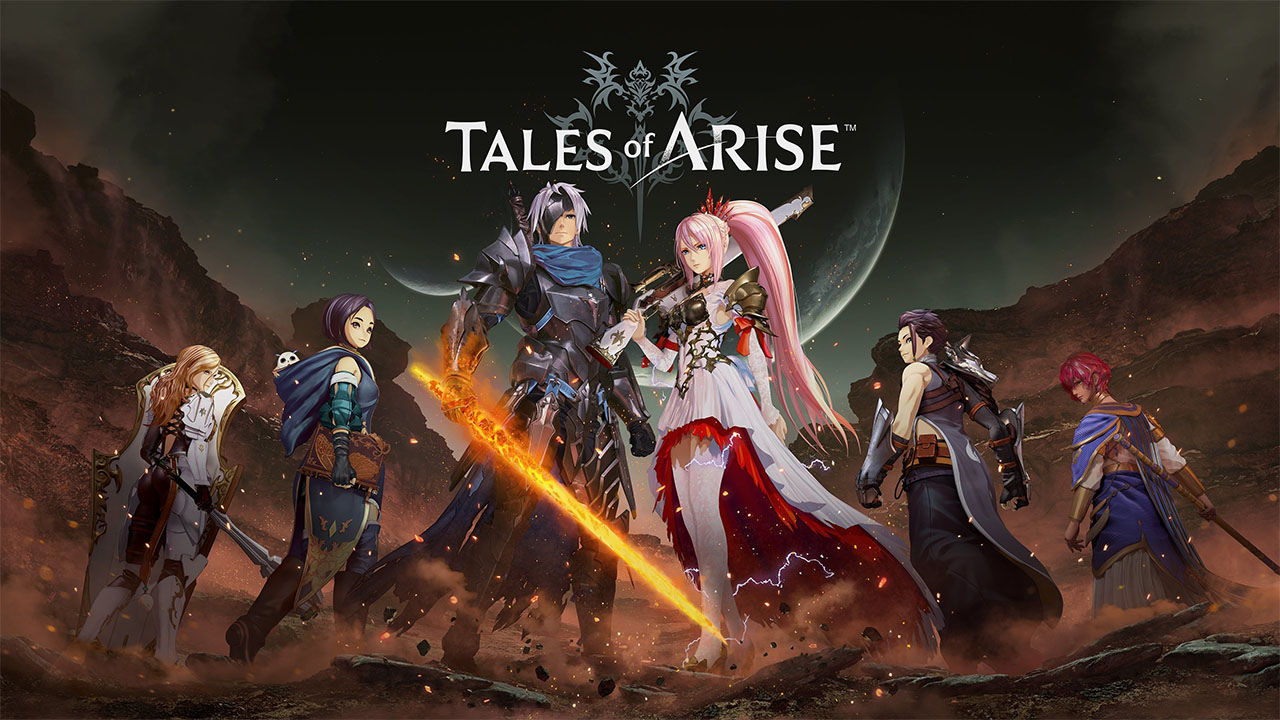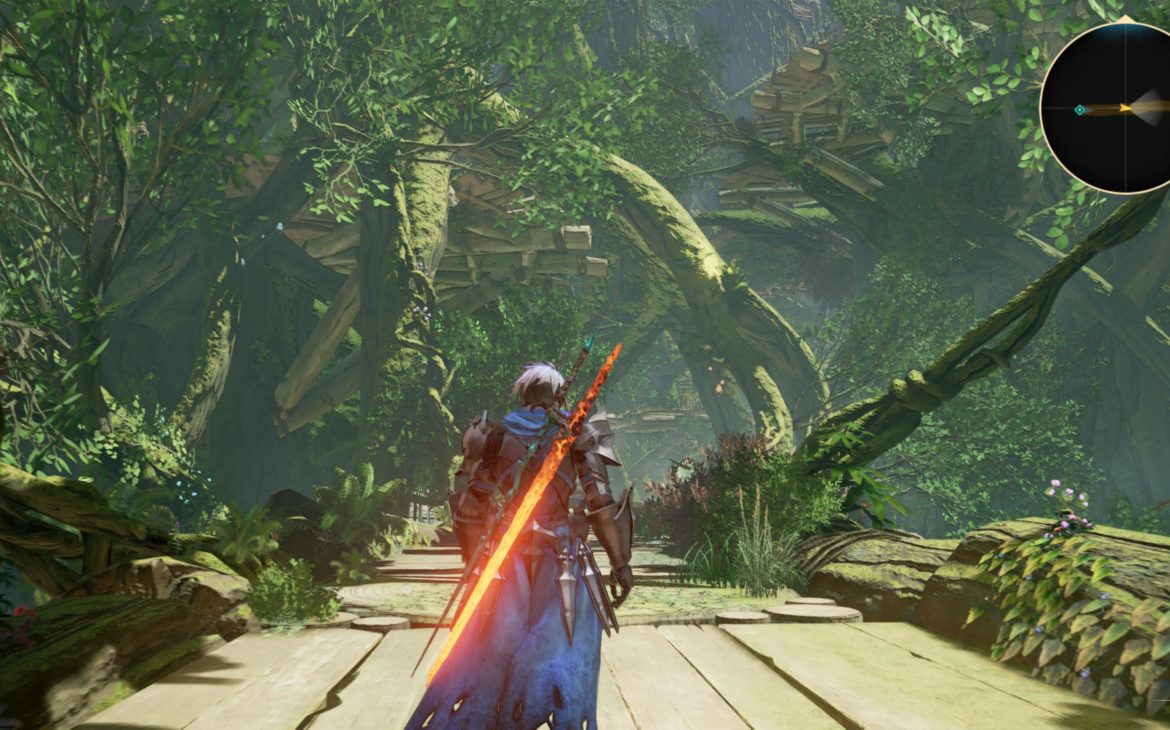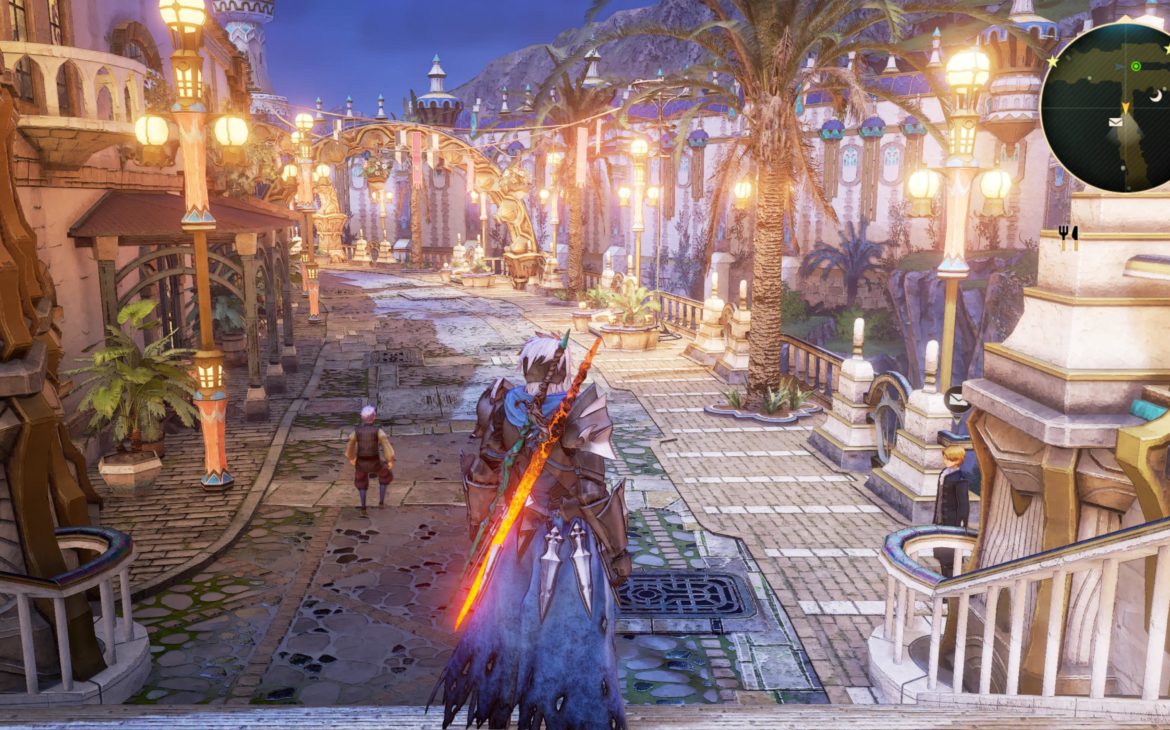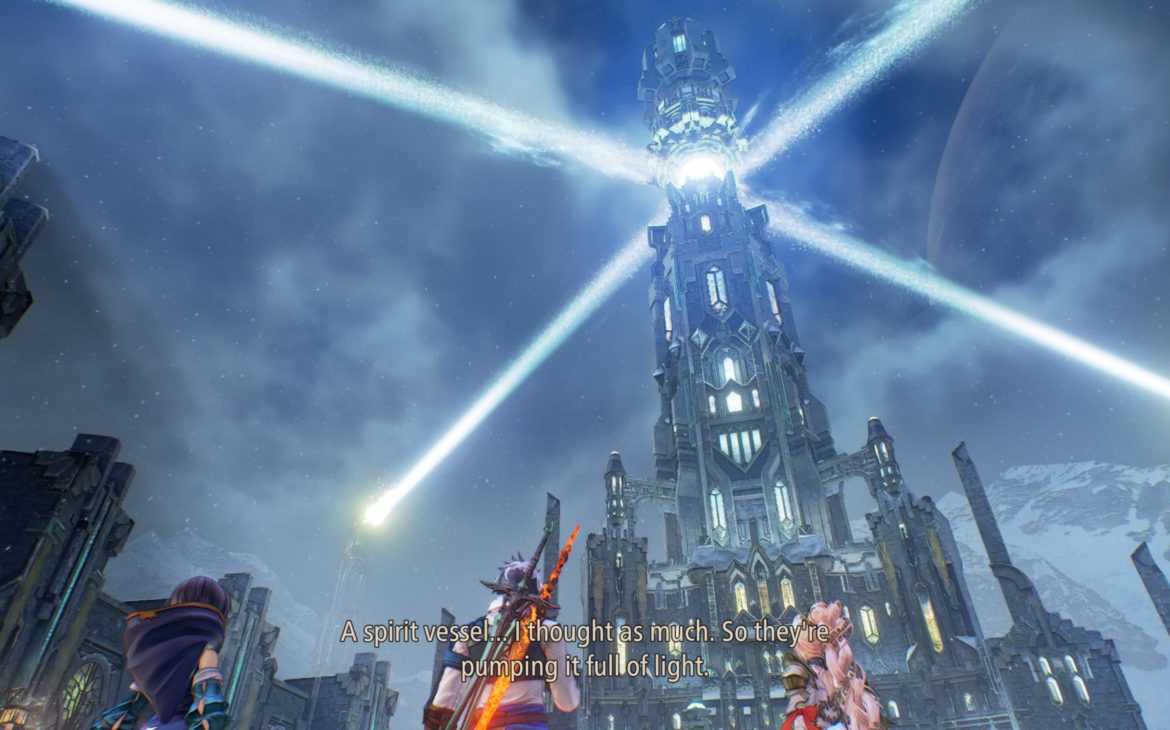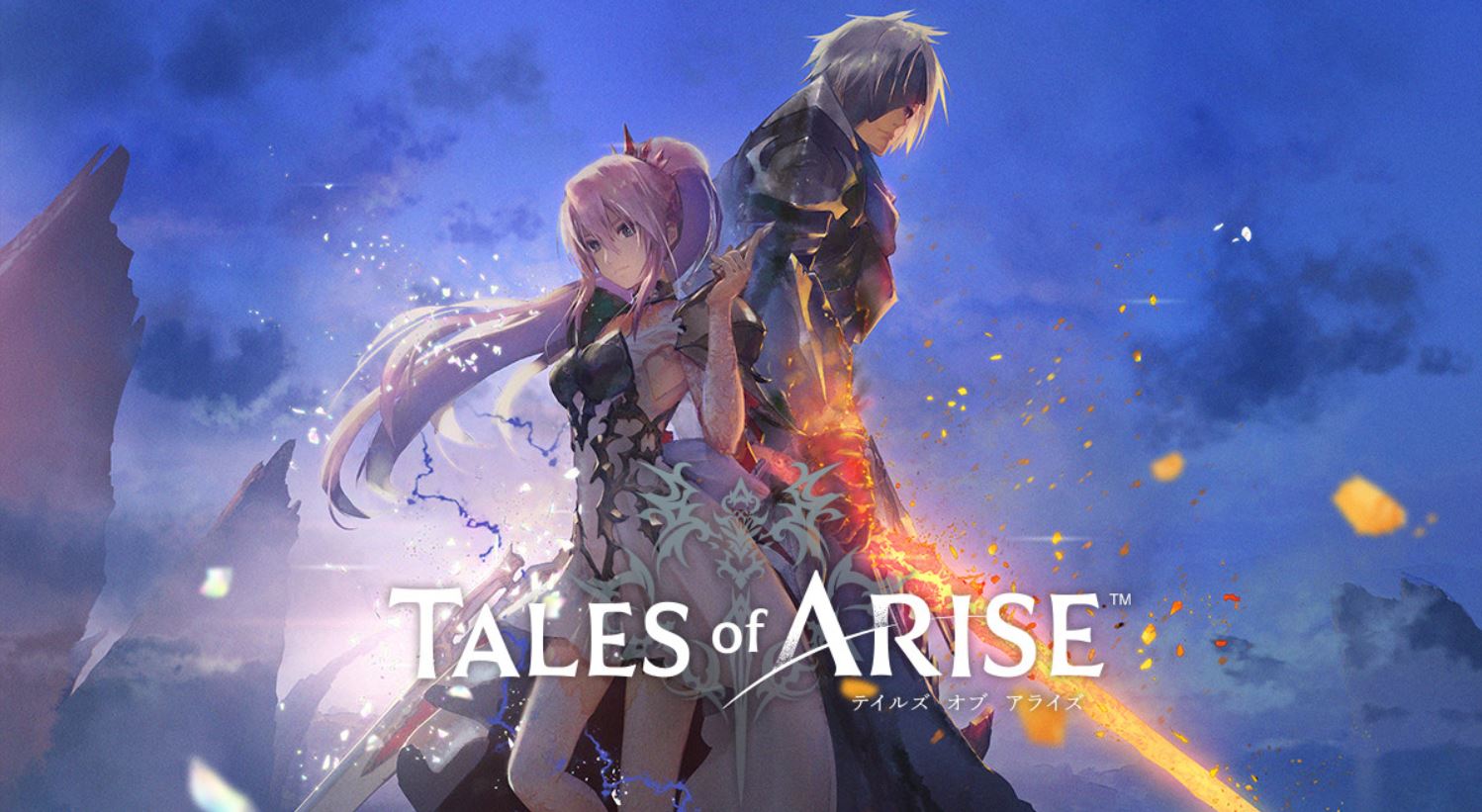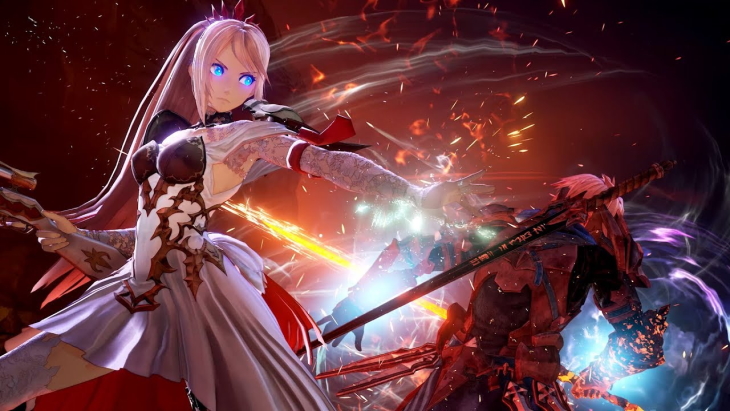Tales of Arise Review (PS5) – The Rise, Fall and Rise Again
In the last two weeks, Tales of Arise has sold more than a million copies making it the fastest-selling Tales game in the series to date. It’s testament to just how starved we are these days for good RPGs, and it makes this review, just a few short weeks after release, seem awfully redundant. I have to hope there are many years worth of more players who will come across this, just needing that extra push either for or against, and an excuse to believe in RPGs again.
Bandai Namco’s Tales Of series has a rich history of gorgeous colourful JRPGs, from Symphonia on the Gamecube which started my love of the series, to the wildly popular Vesperia on the Xbox 360; titles like Phantasia, Eternia, Destiny and Abyss, each and every adventure is always brimming with heart, wonderful characters, intricate politics and epic narratives. It’s hard to believe but it’s been 25 years since Phantasia first debuted on the SNES and Bandai Namco have marked the occasion with the first new mainline Tales game in five years, the longest period without an entry in that entire time. Tales of Arise is something of a departure for the series, a very soft reboot in the modern era using the Unreal Engine, eschewing tired tropes that have carried the series for decades, and updating the core mechanics in the wake of modern hardware.
This is the first Tales game for current-gen consoles, and the first to truly look like it belongs in the generation it’s in. But looks aren’t everything. A great RPG has to have an epic story, wonderful characters and a deep combat system that’ll last you the dozens of hours necessary to reach the end. Does Tales Of Arise have all these things? Yeah, and then some.

In true Tales fashion, two planets, so close as to be visible in each other’s skies, come into contact in the most violent of ways (seriously, this setup is in at least three other games). Dahna, the larger bountiful planet is subjugated by Rena, the smaller, more technologically advanced planet. The Renan’s have ruled for 300 years in Dahna – the perfect premise for a rebellion against an oppressive empire story, which is the bones of the best JRPGs.
In tried and tested JRPG tradition the huge and evil Renan empire subjugate and enslave the Dahnans, and it’s time to fight back. To make things worse, the empire enslaves the Dahnans in order to siphon Astral energy off them, all in the name of a spectacularly cruel game of thrones – out of five realms and five lords, the one who harvests the most astral energy, and therefore who has caused the most hurt and pain – gets crowned the next Emperor. In a nice Assassin’s Creed twist, there isn’t one big bad but five, all of which you’ll need to hunt down and kill throughout the game.
Tales games, and RPGs in general, are as strong as their characters. You need to care about these folk for dozens of hours after all. Tales of Arise does not disappoint, featuring a heavy-handed style as usual, but a wonderfully diverse cast of six party members. The two leads are as convoluted and conjoined as it’s possible to be, but seriously there’s fodder for about three games in this premise. Alphen, a Dahnan slave, is blessed/cursed to be unable to feel pain. He’s exhaustingly heroic and serves as the main protagonist. Shionne is a ruling class Renan, who is cursed with Thorns, a pain-inducing magic that drops anyone who touches her, leaving her emotionally distant. Of course, Alphen can’t feel that pain, see where I’m going here? It could be a terrible fantasy love story, but it’s epic fantasy instead. Shionne holds a power that she cannot wield, a flaming sword that burns its wielder, powerful enough to overthrow the lords, and only Alphen can hold it. They need each other, and with their opposing cultures, need to learn to accept each other and eventually become friends. They need each in order to have a hope of fighting effectively. The writers have given both leads a debilitating handicap, and then given the cure to the other.
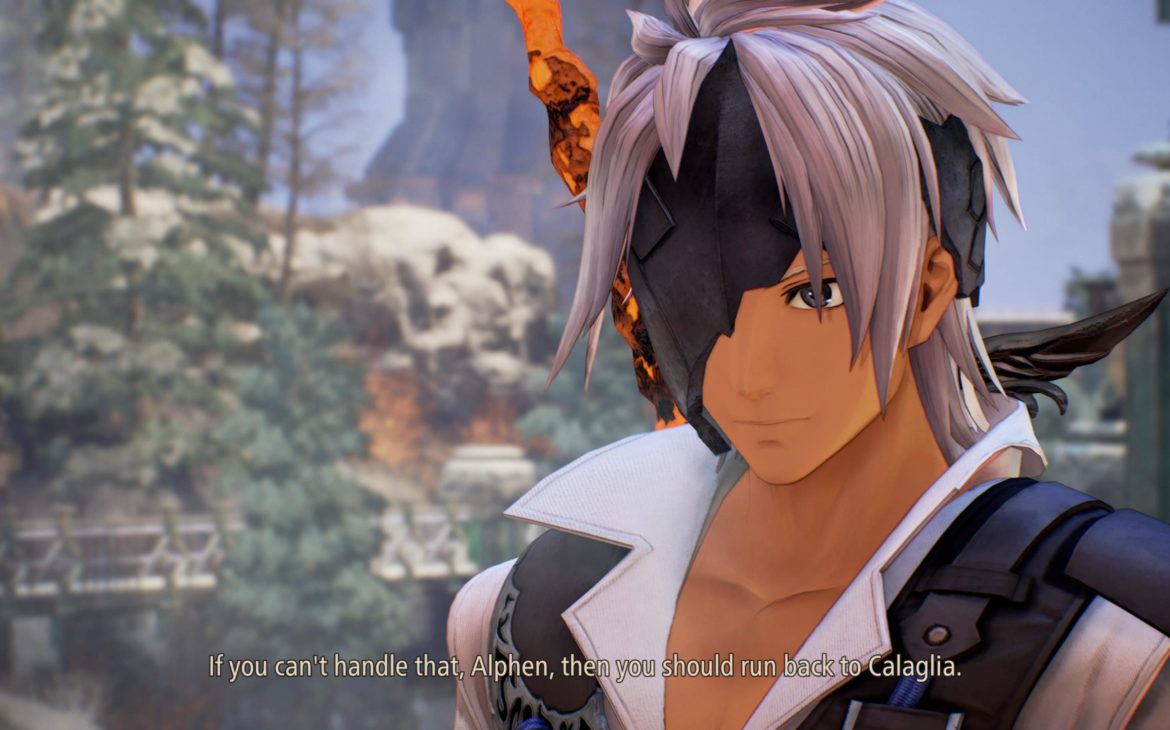
There’s four other party members too; Rinwell, a lovable mage with a secret past and a pet owl; Law, a rash impulsive youth with daddy issues; Kisara, a Dahnan guardian soldier trying to learn how to be her own woman; and Dohalim, a Renan, who to say much more about would verge on spoilers.
The structure of Arise feels different – instead of a world-spanning quest, it’s a continent of despotic Lords to defeat, most of which feel quite close together. Travelling from city to city, liberating the realms one tyrant lord at a time is really rather satisfying. My fights, especially with the second Lord Ganabelt, were often frantic affairs, where I would think I was truly out, only to come back into the fight with some well-timed CP items. It’s testament to the story up to that point, that I had quite a bit of emotional investment in fighting him and taking him down was oh so sweet.
While it’s possible to call the story a little tame, considering it deals with slavery and genocide, it does try – it’s just hampered by the colourful style and lack of blood or shadows and darkness. Genocide looks really odd when no one is even shown getting injured. Alphen also has amnesia which is a hackneyed and boring plot device even when it sets up emotional reveals later in the story. While the premise is certainly cruel, Arise’s attempts to venture into adult theme territory remain pedestrian and tonally dissonant.
That said there are some great moments throughout the story. Each realm is almost its own episode, and some were exceptionally intricate, such as the third realm. There are enough twists to make it satisfying, especially to Tales fans. One early cool scene, when Alphen first wields Shionne’s flaming sword, literally comes about by him pulling it from her chest. This made me think of the really retro Tales games, where magic was a bit more dangerous.
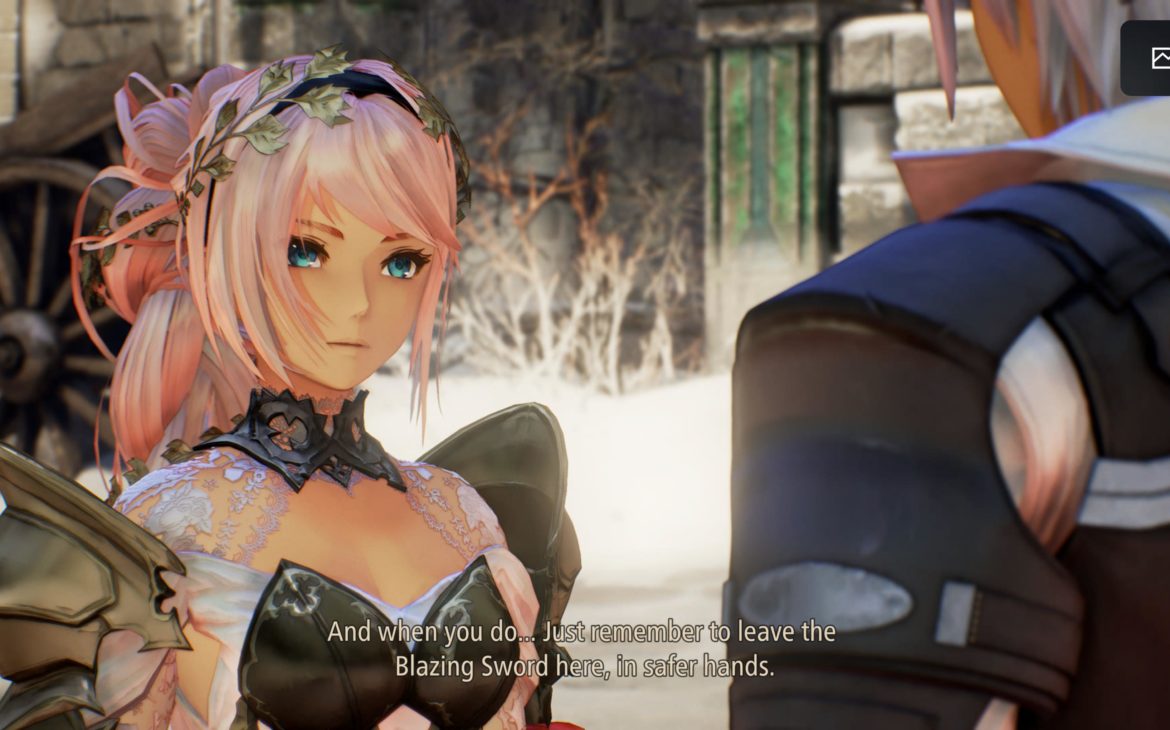
Put Tales of Arise next to any of the previous entries in the series and the difference is stark. Arise is a gorgeous anime beauty on current-gen consoles, using the Unreal Engine to great effect. Much like Scarlet Nexus earlier this year (check out our review), Arise uses a sort of soft-focus cel-shading to make it look like an anime come to life. Check out any trailer to see what I mean.
It seriously sets it apart as a kind of soft reboot for the series. That said, a lot of tried and tested Tales formulas are here, just mostly done better than in the past.
Skits are back, for example, enhanced and re-worked. Instead of the oft-used still anime faces bantering during the long adventuring, Arise replaces these with a kind of half animated, half visual-novel style. It’s similar in many ways to the comic book style that Bandai Namco employed in Scarlet Nexus. They’re also quite a bit better written than they have been in the past, more punchy and relevant, revealing lore and character, rather than just bantering about nothing like they often used to be.
The map system is also top class, and puts a lot of RPGs, with their forced back-tracking and hidden secrets, to shame. Every map is accessible from the point you earn it, you can fast travel to any map already unlocked at almost any time. Haven’t got the CP necessary for the boss? Fast travel out, rest up, and then fast travel back into the fray again (there are a couple of times this isn’t possible). It also makes questing a breeze. Every item, battle, boss, or person of interest in a quest is mapped and you can fast travel between them – quests can be completed in moments, leaving you the spoils and more importantly, time to carry on with the story. Good thing really, because they are incredibly boring for the most part. Go-here-kill-this, or fetch-this-item quests, quests are made frustratingly necessary because they are by far the most effective way to earn skill points, exp and money.
There are some quests, often just sending you straight back into a dungeon you’ve just cleared, that require you to defeat a large enemy. These are often high-health attack sponges, but completing them nets you permanent CP upgrades, which is really essential.

I’ve mentioned CP twice now without explaining what it is, and just before we talk about combat is the right place. One of Tales of Arise’s most unique systems, CP or Cure points, is a kind of shared magical currency for each dungeon, or at least until you next rest. Only a few rare items restore it.
Think of this shared points pool as a group MP dump. Any healing or buff spell will deplete the overall stock, and when there are no more healing points left, you are in big trouble. I don’t think I’ve ever experienced an RPG that had a shared system like this, and it’s certainly interesting. Whether I’d ask for it back again in a sequel or another Tales game, I’m not sure. There were multiple times I found myself fine for CP as I navigated a dungeon, only to run out before the end. As I said earlier, you can just fast travel in and out, but doesn’t that kind of defeat the purpose? You’ll want the full total available when you tackle one of the tough bosses for sure.
Lastly for CP, annoyingly some character’s field actions, such as removing a barrier in a dungeon, or healing a slave, deplete your CP! Meaning you then have the added headache of running it out all the faster in pursuit of items and secrets. Your goodwill towards others negatively affects your survival in dungeons.

The rest of the combat system will be familiar to a Tales fan, but it’s also new and more fluid than in previous entries. Again, if you’ve recently played Scarlet Nexus, you’ll notice a mirror system or two (it’s like those two games were developed concurrently or something).
You have a basic attack, a dodge move, and three of the staple Tales Artes, power moves that you can spam. You have a constantly replenishing supply of points for using these, unlike in previous entries where this has often been very much a limited supply. You can switch from Alphen to any of the other characters on the fly at any time during battle. Indeed it means that you essentially have six party members, although the actual system is four who can fight and take damage, and two in support that you can call in.
And the calling in takes the form of the Boost gauge. Boost Gauge allows for everyone to get involved. Each character has a slowly replenishing move that you can use when ready or if you need a particular aid in battle. For example, Shionne can shoot flying enemies out of the sky with her rifle and Law can break through shields and armour to leave enemies temporarily open to attack. The way you call them in works much like Scarlet Nexus’ combo and assault attacks, pressing a face button direction or shoulder button. Each one continues your combo, breaks enemy defenses, and adds to your AG points to keep up your own Artes. It incentivises not spamming one type of attack, but instead to switch between all of them, cycle through and make the most of them.
I mention breaking enemies, and there is a sort of defense system, that once broken allows you to pummel the crap out of a monster for a short time. Deft management of this is essential. A small diamond shape will fill when you are break defence, and when full if you hit the face arrows, you get a randomly assigned assault move, far more powerful than usual attacks, and usually enough to finish the enemy. The lead character can build up their own meter and then have an ultra mode for a few moments, and a super-powerful move at the end of it, although this is often punishingly hard to pull off, due to needing a double button prompt at the same moment as an Arte hits.
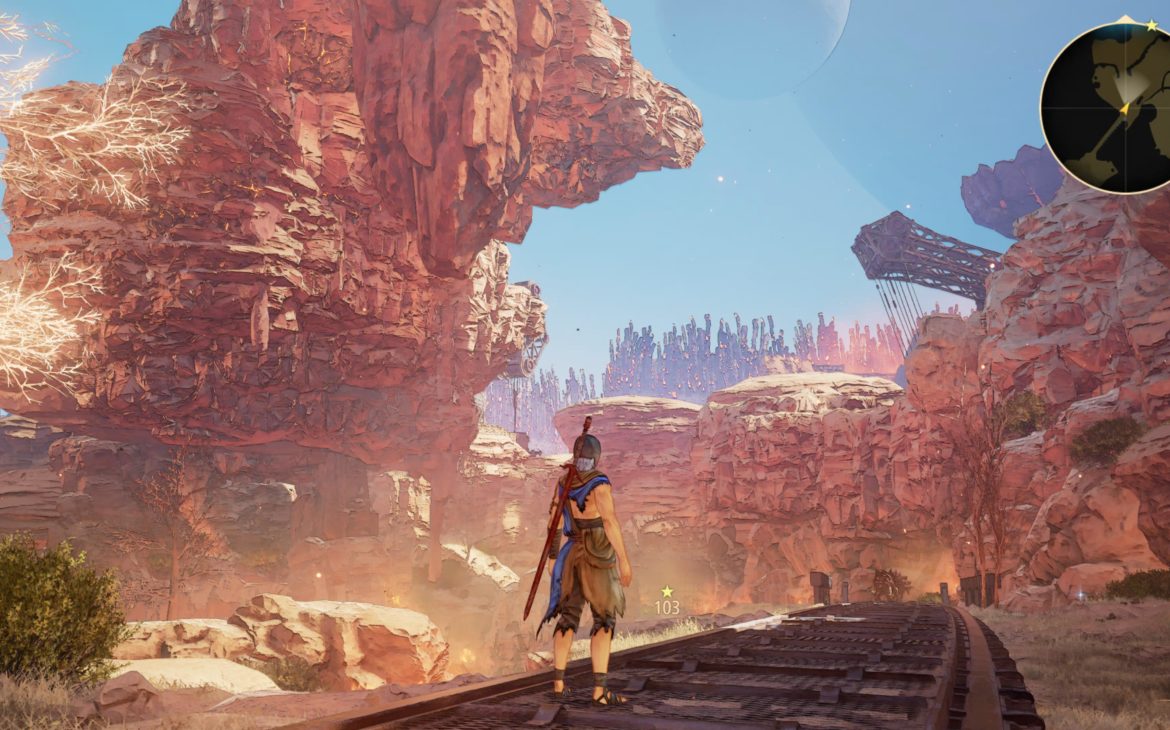
The soundtrack of Tales of Arise is composed by series veteran Motoi Sakuraba. He has been the composer behind all the mainline Tales games, but also the Star Ocean series, Valkyrie Profile, and the Dark Souls games. The music throughout Tales of Arise is stirring and accomplished, especially the theme song that was covered by Lindsey Sterling at Opening Night Live last month. While there aren’t that many tracks that are all that memorable, the soundtrack is lush and vibrant and because of his pedigree, sounds just like a Tales game.
In general, I found the voiceover artist’s work throughout the game to be fantastic, six very strong performances for the party members, and a number of great supporting cast. Some of the villain’s voices left a bit to be desired, unhinged and manic and often a little ridiculous. If you play other RPG series you will likely notice the staple set of voiceover artists such as Patrick Seitz who voices Dogi in the Ys games and Olberic in Octopath Traveller, and Ray Chase who voiced Neir in Replicant, and Genchiro Ashina in Sekiro, and Erica Lindbeck who plays Futaba in Persona 5 and Jessie in FF7 Remake. In short, it’s an accomplished and respected group of voice actors and the story’s in good hands.
While Tales of Arise does a lot of things right there are some issues. The skill tree where you spend those hard-earned Skill points is dull, confusing and lifeless. Based on you achieving certain, generally unexplained titles (which is an old Tales staple), you then receive an emblem, a skill or stat upgrade, and a little set of five others you can spend points on. For the most part, these just come whenever with no discernible reasoning – while a couple are explained such as cooking 10 meals. While some things are Artes and Skills which are very useful, others are such tiny stat increases, and to such strange places, as to seem not worth your time. Rare is the Attack up, defense up etc, that you might want and expect. It’s also designed in a very lifeless way, just a simple grid of these emblems you have to sort through.
Another issue I had was that despite the uplift seen in character models and locations using the new engine, the same cannot be said for the rest of the NPCs, even ones you spend a good deal of time with. They have bland, almost expressionless faces that make them look like they come from a different game, only a few stages on from a Mii. Animation on NPCs and also generally in the Skits is very stilted and could have been a lot more engaging. The colour palette is also very bright, lacking much in the way of shadow and contrast.
Tales of Arise continues the series track record of fun, emotional tales, with wonderful characters, and a generally easily absorbed plot that will keep you moving to the end. It’s relatively surface-level and rarely features the kind of depth you might expect in a more seasoned RPG, like Final Fantasy 7 Remake or Persona 5. When it does go deep, it’s tonally jarring to deal with dark themes such as slavery and genocide without the realism necessary to portray them accurately. It’s hard to show the reality of brutal labour and slavery without any blood or wounds, and a colour palette that doesn’t involve anywhere near enough darkness or contrast. The reality of the situation is largely handled off-screen and left to your imagination.
That said, Tales of Arise is a markedly more adult game than its predecessors that takes a massive step forward for a franchise that was starting to seem stale. It also evolves the combat system further than ever before, streamlines masses of the more boring content although without removing it entirely, and modernises Tales gimmicks, like skits, into content more accessible for all. It’s a shame this meant a dumbed-down skill tree, and almost nothing available in stat manipulation.
But maybe that’s where this Tales shines. It’s straightforward, you know what you’re getting. Arise is an evolution, full of quality-of-life updates and a more adult story that is sure to bring on new fans, but it also doesn’t change anything so dramatically as to alienate its existing ones. Many of those fans have grown up with the series, and the more adult tone makes me feel the series has grown up with them. It’s accessible and a sudden jump in quality, a lot like Tales of Symphonia was on Gamecube – massively expanding Tales’ reach, and rising from a stagnant period. With Tales of Arise and Scarlet Nexus in one year, Bandai Namco are basically on fire.
With a beautiful new style, a more adult narrative, wonderful characters, and a modernised tone and feel, Tales of Arise brings the franchise smashing into the current era. It’s still got the tried-and-true Tales flavour, both good and bad, yet innovates with fluid combat that feels fresh. The best and most essential Tales game in well over a decade.

Tales of Arise is available now on PS4, PS5 (review platform), Xbox One, Xbox Series S|X and PC via Steam.
Developer: Bandai Namco
Publisher: Bandai Namco
Disclaimer: In order to complete this review, we were provided with a promotional copy of the game. For our full review policy, please go here.
If you enjoyed this article or any more of our content, please consider our Patreon.
Make sure to follow Finger Guns on our social channels –Twitter, Facebook, Twitch, Spotify or Apple Podcasts – to keep up to date on our news, reviews and features.
